In 2021, Xavier Salomon, chief curator of the Frick, met the Swiss Nicolas Party. Salomon invited Party to collaborate on an installation for the Frick Madison, destined to frame Rosalba Carriera’s Portrait of a Man in Pilgrim Costume (c. 1730): a Venetian pastel, redolent of that city’s celebrated carnival. The identity of Rosalba’s sitter, probably a British, French or German visitor, is unrecorded. His lavishly brocaded waistcoat, of a type incorporating exotic fruit, may have inspired Party’s textile-inspired response. The pastellist’s three murals form an open room with the Rosalba piece on the central wall flanked by two of his own framed works. This ensemble will remain in situ until 3 March 2024. When the Frick Collection returns to its Gilded Age mansion following renovations, the party will be over: Party’s murals will be destroyed.
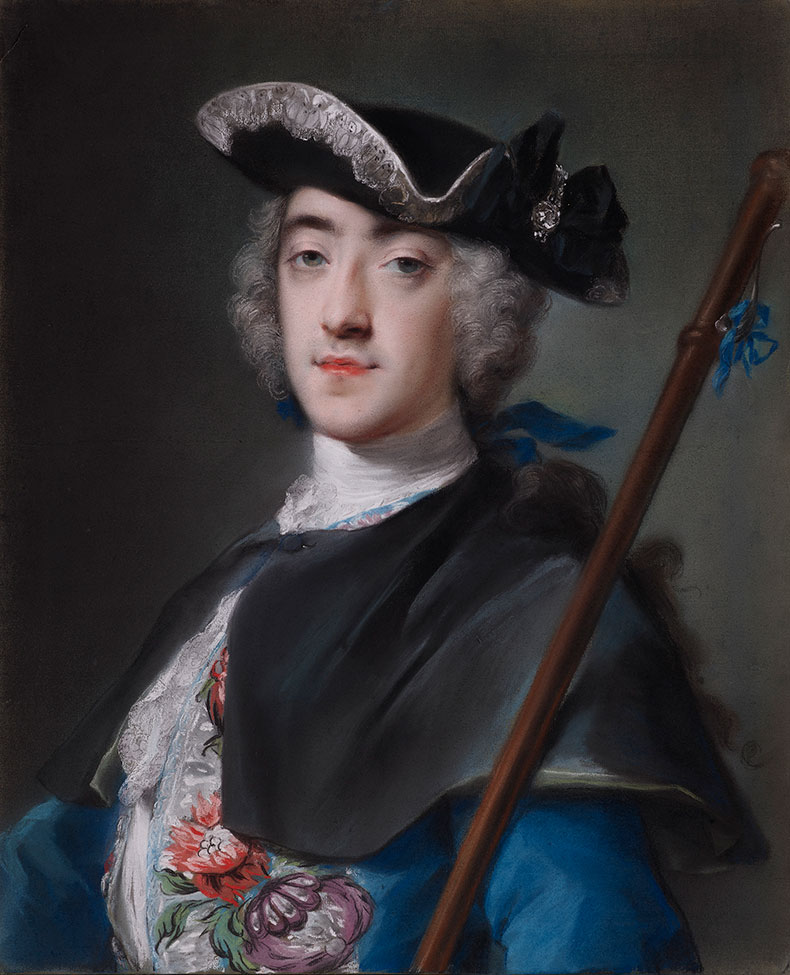
Portrait of a Man in Pilgrim’s Costume (c. 1730), Rosalba Carriera. The Frick Collection, gift of Alexis Gregory, 2020. Photo: Joseph Coscia Jr.
In its froth of lace and drapery, Party’s set piece evokes the feminine quality in this pioneering 18th-century Venetian pastellist’s oeuvre. He also draws on work by the French portraitist Maurice Quentin de la Tour and his contemporary Jean-Étienne Liotard, a Swiss-born Huguenot. Party’s backdrop for Rosalba’s portrait is inspired by the dress worn by Madame de Pompadour in de la Tour’s c. 1755 pastel showing the royal mistress in her study. Lesley Miller, the leading historian of textile and dress, says that de la Tour shows Pompadour wearing ‘a woven silk of resolutely European design, likely from Lyons, brocaded in polychrome silks with gold thread for the leaves.’ Pastel was the perfect medium to capture such intense colour. Providing it was well protected, the resulting portrait would retain its vivid pigment, free of the veiling effect of aged varnish on oil paintings.
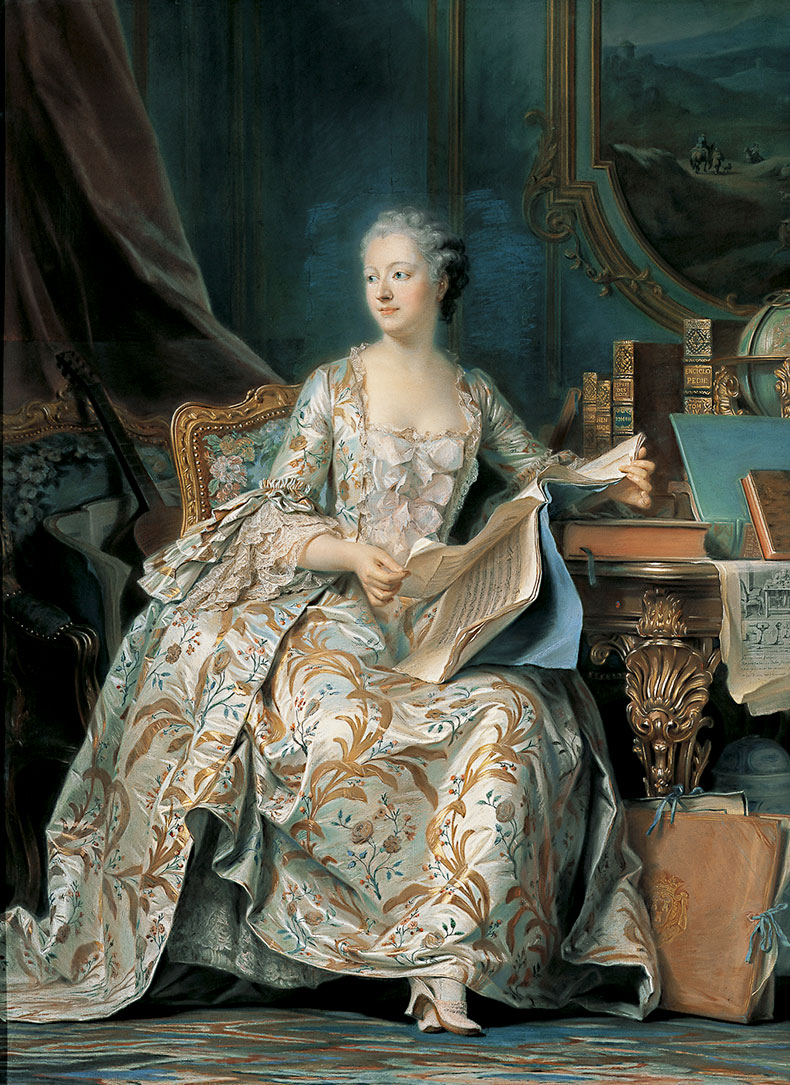
Madame de Pompadour in her Study (c. 1755), Maurice Quentin de la Tour. Louvre Museum
To the left of the Rosalba, an imaginary portrait by Party is framed by textiles lifted from the dress in Liotard’s Woman in Turkish Dress, Seated on a Sofa (c. 1752). Miller confirms that the sitter’s robe (entari) is ‘Middle Eastern in aesthetic, and may be woven or embroidered’. It is worn with an undershirt (gomlek), while her right arm has shed the sleeve of her Turkey red kaftan, which is embroidered in gold. Her head leans against a swathe of ermine, the white winter fur of the stoat flecked with black tail ends. Party juxtaposes these different textures and captures Liotard’s colours and patterns. Liotard may have brought this outfit back from Constantinople: it reappears in his works Lady Anne Somerset (1755) and Anne Gunning, Countess of Coventry (1755), both created in England.
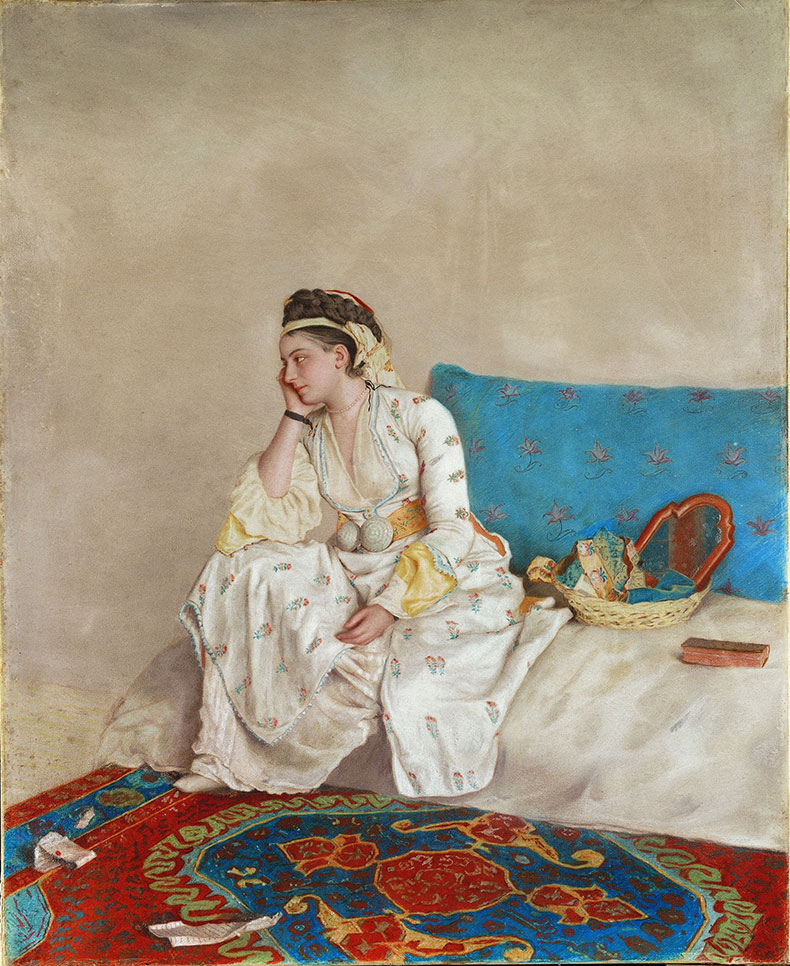
Woman in Turkish Dress, Seated on a Sofa (c. 1752), Jean-Étienne Liotard. The Metropolitan Museum of Art
Party’s portrait on the opposite wall is set against the representation of starched linen, a reference to the apron worn by Liotard’s most celebrated sitter The Chocolate Girl (c. 1744), which Rosalba herself considered ‘the most beautiful pastel ever seen’.
Behind this whimsical theatrical setting for Rosalba’s masterpiece lurk unanswered questions of identity. Who was the person depicted in Portrait of a Man in Pilgrim’s Costume? Is the Woman in Turkish Dress, Seated on a Sofa an artist’s model? Who was Liotard’s Chocolate Girl? The son of a textile merchant and tailor, Liotard was evidently fascinated by textiles. Likewise, Party revels in the range and texture of dress; his installation encourages the viewer to engage with the design and colour of luxurious fabrics. Dress in these portraits is as significant as the representation of the wearer in emphasising the sitter’s status. In London, portraits on show in ‘Style & Society: Dressing the Georgians’ at the Queen’s Gallery in Buckingham Palace range from the practical dress of laundry maids to glittering gowns worn at court; there Pompadour appears wearing a floral gown of painted silk imported from China, in a 1764 portrait from the studio of François-Hubert Drouais.
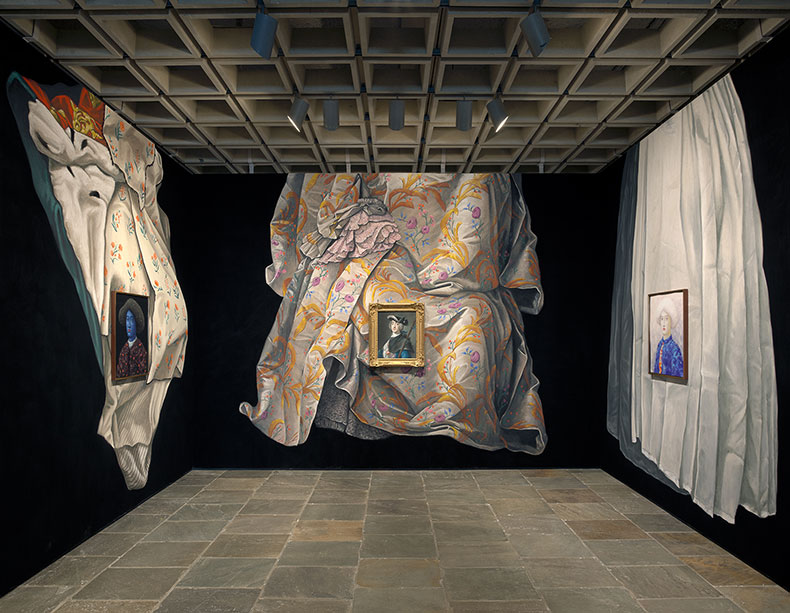
Installation view of ‘Nicolas Party and Rosalba Carriera’ at Frick Madison. Photo: Joseph Coscia Jr.
The Rosalba portrait that inspired this commission came to the Frick in 2020 from the collection of the late Alexis Gregory: founder of the Vendome Press, devotee of architecture, interior design and photography, responsible for the internationally recognised Vendome piano prize – and passionate about Venice. Gregory’s Fifth Avenue apartment resembled a Kunstkammer, in which bronzes, Chinese and French porcelain, Limoges tazze and rare French pottery vied with baroque and rococo paintings, including the Rosalba. Bronzes and Limoges enamels from Gregory’s collection are shown in the gallery adjacent to Party’s murals.
Party’s installation breathes new vitality and cosmopolitan sophistication into Rosalba’s masterpiece, while its ephemeral nature stops us in our tracks. The preservation of large-scale murals in pastel is impracticable, but their transitory nature encourages the viewer to reflect and recall the masterpieces they evoke.
‘Nicolas Party and Rosalba Carriera’ is at Frick Madison, New York until 3 March 2024.
Unlimited access from just $16 every 3 months
Subscribe to get unlimited and exclusive access to the top art stories, interviews and exhibition reviews.


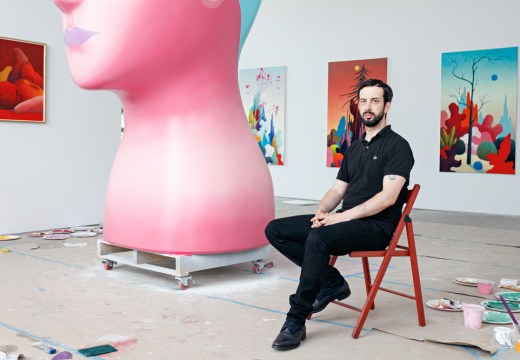
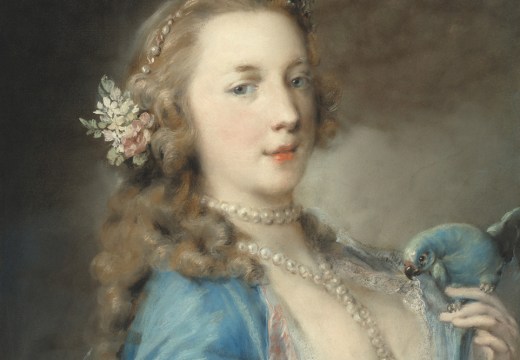
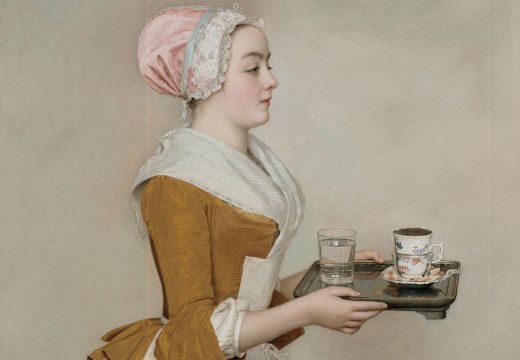









![Masterpiece [Re]discovery 2022. Photo: Ben Fisher Photography, courtesy of Masterpiece London](http://www.apollo-magazine.com/wp-content/uploads/2022/07/MPL2022_4263.jpg)
Has arts punditry become a perk for politicos?